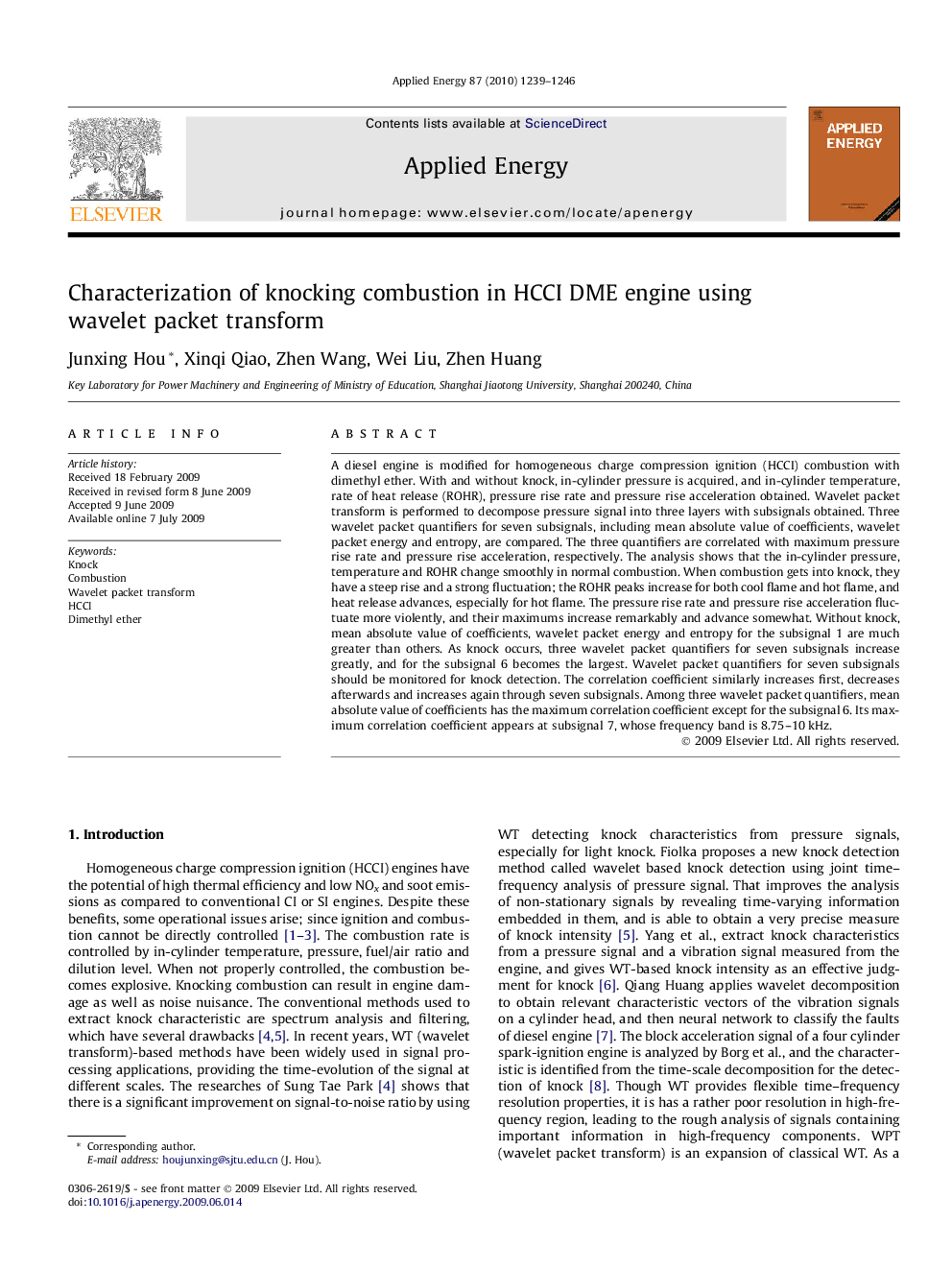| کد مقاله | کد نشریه | سال انتشار | مقاله انگلیسی | نسخه تمام متن |
|---|---|---|---|---|
| 244631 | 501956 | 2010 | 8 صفحه PDF | دانلود رایگان |

A diesel engine is modified for homogeneous charge compression ignition (HCCI) combustion with dimethyl ether. With and without knock, in-cylinder pressure is acquired, and in-cylinder temperature, rate of heat release (ROHR), pressure rise rate and pressure rise acceleration obtained. Wavelet packet transform is performed to decompose pressure signal into three layers with subsignals obtained. Three wavelet packet quantifiers for seven subsignals, including mean absolute value of coefficients, wavelet packet energy and entropy, are compared. The three quantifiers are correlated with maximum pressure rise rate and pressure rise acceleration, respectively. The analysis shows that the in-cylinder pressure, temperature and ROHR change smoothly in normal combustion. When combustion gets into knock, they have a steep rise and a strong fluctuation; the ROHR peaks increase for both cool flame and hot flame, and heat release advances, especially for hot flame. The pressure rise rate and pressure rise acceleration fluctuate more violently, and their maximums increase remarkably and advance somewhat. Without knock, mean absolute value of coefficients, wavelet packet energy and entropy for the subsignal 1 are much greater than others. As knock occurs, three wavelet packet quantifiers for seven subsignals increase greatly, and for the subsignal 6 becomes the largest. Wavelet packet quantifiers for seven subsignals should be monitored for knock detection. The correlation coefficient similarly increases first, decreases afterwards and increases again through seven subsignals. Among three wavelet packet quantifiers, mean absolute value of coefficients has the maximum correlation coefficient except for the subsignal 6. Its maximum correlation coefficient appears at subsignal 7, whose frequency band is 8.75–10 kHz.
Journal: Applied Energy - Volume 87, Issue 4, April 2010, Pages 1239–1246